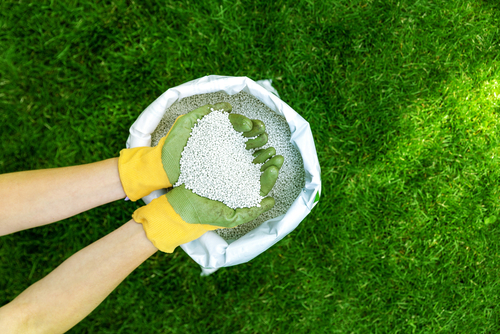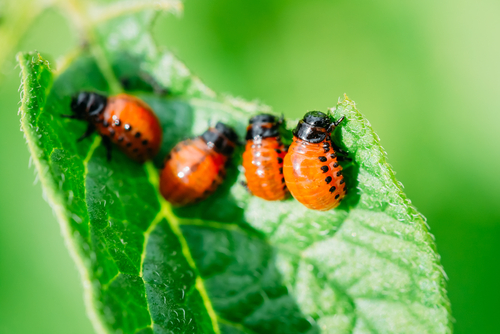
Types Of Landscaping Styles To Consider
March 1, 2022
How to Maintain Rock landscaping in Singapore?
April 27, 2022Why Does Grass Turn Yellow After Cutting?

Why Does Grass Turn Yellow After Cutting? Grass will turn yellow after cutting because the blades of grass have been damaged and can no longer produce chlorophyll, which gives the grass its green color. When grass is healthy, chlorophyll production runs at maximum capacity. However, when cut, the grass growth for that particular blade stops.
Without chlorophyll to protect itself from the sun’s harmful UV rays, the grass will begin to die. This is especially true if there are a lot of other blades around them. In this article, we will discuss why grass turns yellow after cutting. Read on!
Improper Mowing

The first item on the list of why grass turns yellow after cutting is improper mowing. Improper mowing can deprive your lawn of its nutrients to grow and thrive. When you improperly mow your grass, you leave behind clippings that have not been raked up or removed from your yard. These clippings are left in the area where they were cut and make it difficult for water to get to the roots of the grass.
Also, when you Improperly mow your lawn, you are cutting off too many blades at one time, resulting in stunted growth and a loss of nutrients. When you do not remove all of the clippings from your lawn, this can lead to diseases such as rust and brown rot. These diseases will cause your grass to become discolored and will cause it to look much older than its actual age.
Lack of Water

The number one reason why cutting grass can cause it to turn yellow is that the lawn is not getting enough water. There are several ways to solve this problem, and it is important to take measures in your garden to make sure you don’t end up with a lawn full of yellow grass. You can start by ensuring that your lawn gets enough water throughout the day.
This means watering the lawn thoroughly, but not over-watering. Depending on the grass you have, you may want to add a little extra water during dry spells.
Wrong Fertilizer

Grass turns yellow after cutting because the wrong fertilizer was used. There are many different types of fertilizer, but one type is particularly prone to causing yellow grass. This type of fertilizer is called slow-release. Slow-release fertilizer is designed to release nutrients over a long period.
This means that the fertilizer will last longer than other types, but it also means that it’s less likely to cause immediate growth in your lawn. If you’re using slow-release fertilizer, it’s possible that your lawn needs more nutrients than the fertilizer is providing. When this happens, the lawn can turn yellow or brown. A simple solution to this problem would be to apply some more fertilizer.
Disease

Your yellow lawn may be diseased. If it has been a dry year and you’ve been watering your lawn regularly, the disease probably isn’t the culprit. But if your lawn has been exposed to excessive rainfall or is overwatered, you should look at disease as a possible cause.
The disease can also be caused by inadequate drainage, so you’ll want to address those areas if you have low spots in your yard where water pools. You can fix the drainage problems by adding soil or sand to the lower areas of your yard. If you’ve determined that disease may be the cause of your yellow grass, there are several ways a professional can help:
- Test for disease:
- Identify affected areas
- Use fungicides
Wrong Cutting Height

Wrong-cutting height is one of the most common reasons grass turns yellow after cutting, and it can be avoided. The best time to cut your grass is when it’s at least 3 inches tall.
When you cut your grass too short, you risk damaging the grass and causing it to turn yellow. Set your mower height to at least 3 inches tall or as high as recommended by your local extension office when you mow your lawn. This will ensure that the grass has enough leaf tissue to absorb sunlight and water without damaging the mower’s blades.
Improper Sunlight

Getting the right amount of sunlight is important for your grass. Grass that has gotten too little sunlight can turn yellow, while grass that has gotten too much can also turn yellow or brown in areas that have become burned.
This is because the sunlight has damaged the chlorophyll in the grass, which causes it to lose its green coloration. If your grass is turning yellow and you suspect it’s due to improper lighting, cut back on how often you’re mowing your lawn and consider installing a sprinkler system instead.
Weed and Insects

If you notice that the grass turns yellow after cutting, there are weeds and insects on the lawn. Before you address this problem, you need to ensure that it is indeed caused by these two. You can do so by checking the condition of your lawn. You should also be able to see if there are any signs of a disease or fungus on your lawn.
This will help you determine what needs to be done next. If it is indeed due to weeds and insects, then you need to treat your lawn accordingly. You can use a weed killer and insecticide on your lawn. These products will kill the weeds and insects that are causing the yellowing of your grass after cutting.
If you are not sure about the best way to get rid of the weeds and insects from your lawn, you can always consult an expert who will give you advice on how to resolve this problem effectively.
Soil pH Imbalance

Soil pH imbalance is one of the most common causes of yellowing grass. Grass prefers a slightly acidic soil pH, between 6 and 7. Soil with a higher pH level can inhibit your grass’s ability to absorb nutrients that it needs to grow properly.
If you suspect your soil has become too alkaline, you can test its pH levels by purchasing a testing kit from your local hardware store. Once you know where your soil is, you can add lime to raise the pH or sulfur to lower it.
Wrapping Up
Green is the color of life and a sign of fertility, disease resistance, and vigor in plants. At times it can be hard to pin down why a grass plant either turns greyish or yellowish between cuttings. Other environmental factors such as temperature, humidity, and stress must also be considered. And some of these may also have been causes contributing to any observed green grass yellowing.




